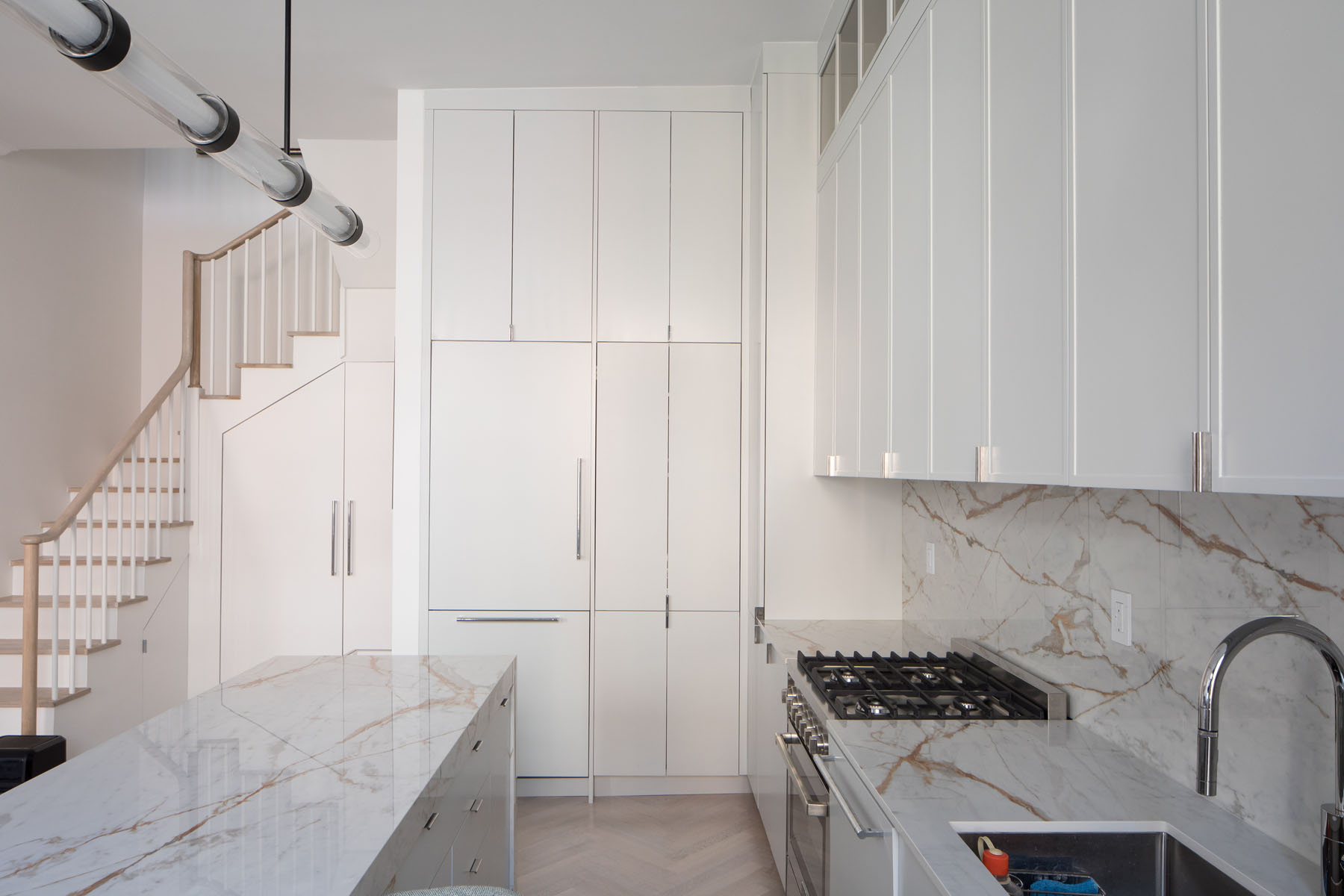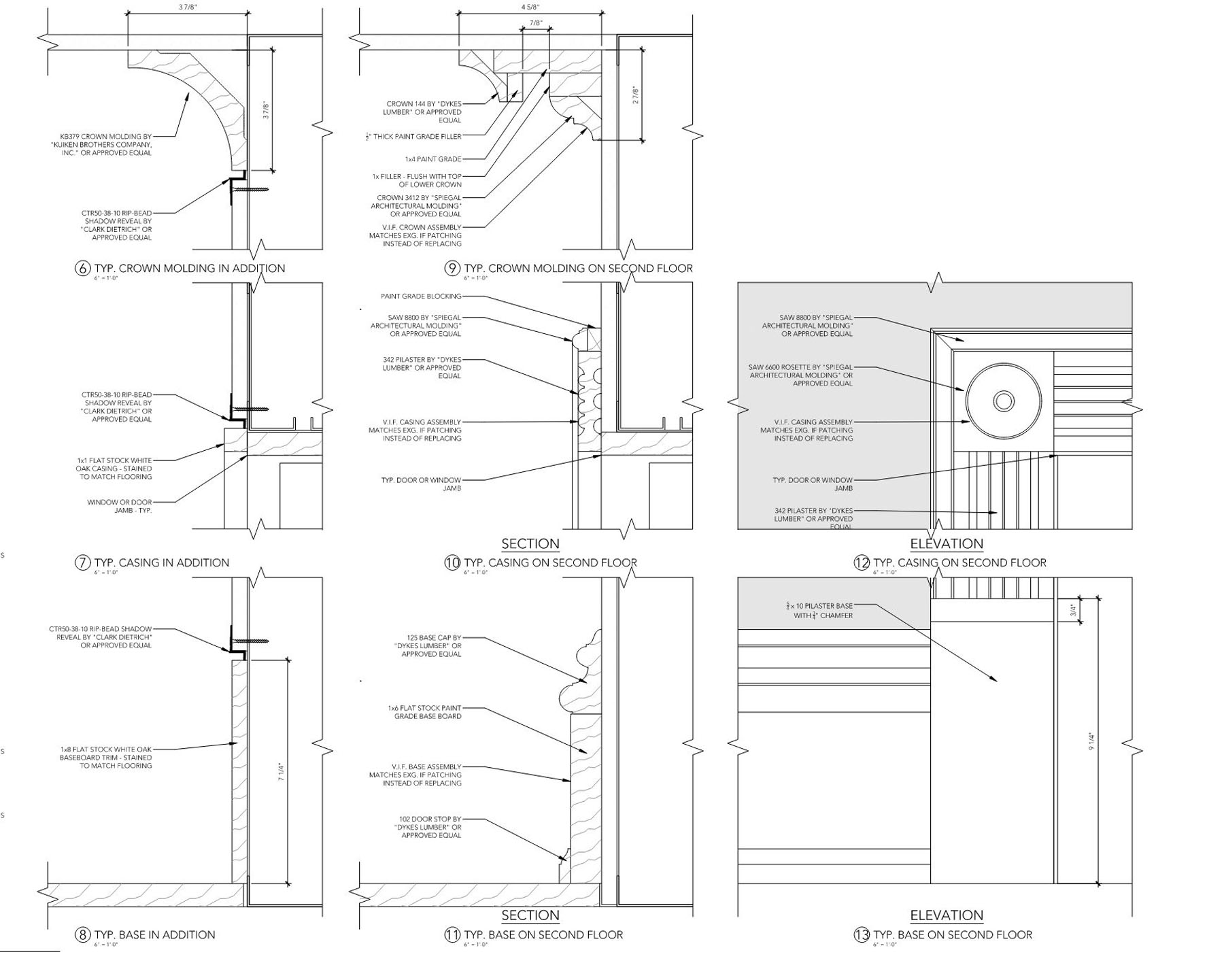MODERN TRIM DETAILS


What is door trim?
Door trim refers to the moldings that surround a door and cover the gap between the jamb and the wall. Specifically referred to as “door casing”, it comprises of a wood molding piece that surrounds the door and gets applied after the door gets installed.

What is the purpose of door trim?
When a door opening is framed and sheetrocked, the leftover edges tend to be rough and messy. After the door gets installed, level and plumb, there is usually a gap leftover between the sheetrock and the wood door jamb. Door trim gives an opportunity to clean up this edge for a finished look.
Besides performing this simple function of covering this gap, door casings are typically decorative and are one of the main ways for architects and designers to express or reinforce a specific design language throughout a space.

For example, in historic brownstone renovation in Park Slope, we might select a Greek Revival molding that feels historically appropriate to the house, or in a midcentury modern house we might select a molding that enhances the natural wood features throughout.

What are the options for modern door trim?
Typical contemporary or modern door trim comes in many shapes and styles. One very simple detail that we like to use is a basic square “flat stock” profile, rather than a curved or profiled molding. Another more contemporary detail would be to use a “shadow bead” detail to give a bit of depth and outline the opening more clearly.
Recently, for even more modern, minimal, contemporary detailing, we’ve been forgoing door trim completely, and using a “trimless” door detail.

What is a trimless door?
As the name suggests, a trimless door is a door that has a completely flush, seamless, appearance, without any trim whatsoever. In the past this kind of detailing was very difficult to achieve, but a few recent innovations have made it much easier for everyone to achieve that same level of contemporary detailing.

How are trimless doors installed?
One of our favorite products to create the trimless look is from a company called EzyJamb. It is a metal frame that gets installed around the rough opening after the sheetrock is installed. The door can be installed as ususal, and then the frame gets a final layer of plaster “skimmed in” to create the completely seamless, flush look.

What are the advantages of trimless doors?
Besides the aesthetic advantages of creating a completely seamless, “hidden-door” look, we also frequently specify them when we are tight on space, a frequent occurrence in NYC apartment renovations. In a typical door in a hallway, for example, you would need an additional 6-8″ on either side of the door to accommodate the space required for the usual molding. A trimless door can be installed with much less space. Depending on the type of door swing, hinges, etc, it could be as little as 1-2″.
How much do trimless door cost?
The price varies, but in our most recent project, a design-build renovation in a co-op on Riverside Drive, the pricing for the Ezy Jamb system was around $1200-1500 per door.
Should I consider trimless doors for my co-op or condo renovation in NYC?
Though they require a bit more coordination and planning in terms of configuration and hardware, the seamless, flush look is great for anyone trying to create a minimal, contemporary apartment in NYC. We also think they are the perfect fit for space-conscious renovations where there is no room for more traditional casings.
Interested in finding out more about how we use trimless doors in our renovation project?
Read more about the trimless doors at our Chelsea Renovation here or schedule a time to discuss your project with Matt, our principal architect at the link below: